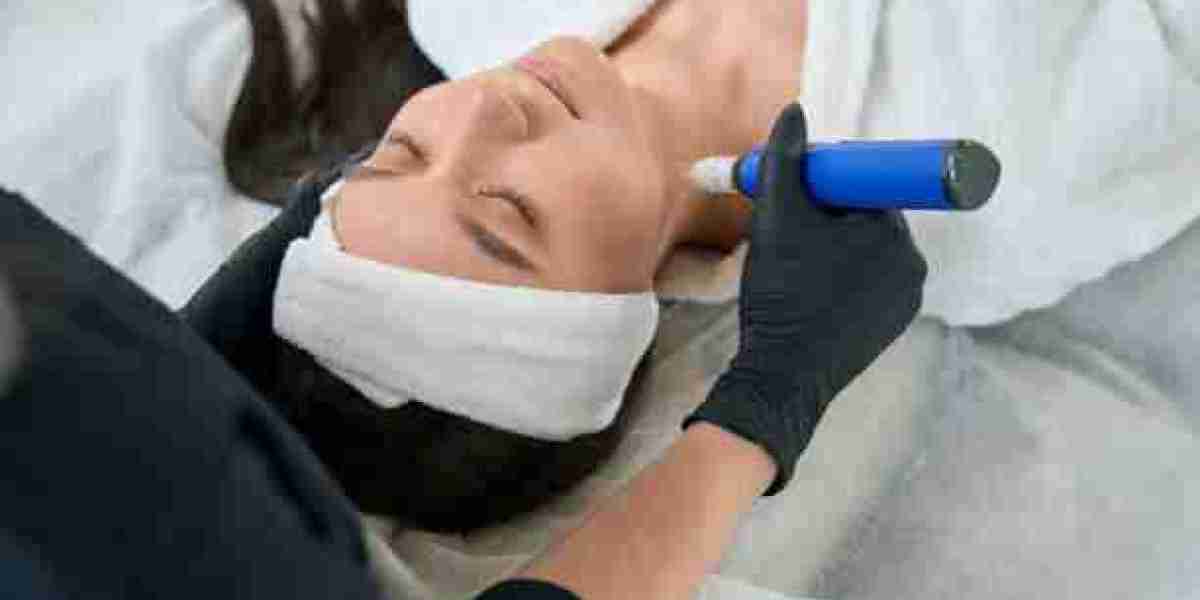In the evolving world of skincare, microneedling has become a go-to solution for rejuvenating tired, dull, or scarred skin. Among the tools leading this transformation is the Derma Pen—a microneedling device designed to stimulate collagen production and promote skin healing. But with increasing access to at-home microneedling devices, many are left wondering: is it better to use a Derma Pen at home or get treated by a professional?
Let’s dive deep into the key differences between at-home and professional Derma pen treatments, understand their benefits and limitations, and find out which is best suited for your skincare goals.
Understanding the Basics of Derma Pen
The Derma Pen is a type of microneedling device fitted with fine, sterile needles that create tiny punctures on the skin’s surface. These controlled micro-injuries kickstart the body’s natural healing process, encouraging collagen and elastin production.
The result? Improved skin texture, reduced scars, minimized pores, and even-toned, youthful skin. But not all Derma pen experiences are created equal. The depth of penetration, effectiveness, and safety greatly depend on whether the procedure is done at home or by a trained professional.
What Makes the Derma Pen So Popular?
Derma pen microneedling has gained attention for its minimally invasive approach to skincare. It targets common concerns such as acne scars, wrinkles, pigmentation, and stretch marks—all without the downtime of more invasive procedures. With consistent sessions, it offers noticeable skin refinement and a smoother, more radiant complexion.
People love that it doesn’t rely on chemicals or surgery—just the body’s own natural ability to heal and regenerate.
Key Differences: At-Home Derma Pen vs Professional Treatment
When considering microneedling, it’s important to compare how the treatment varies at home versus in a clinical setting. Let’s break down the critical areas:
Needle Depth and Device Strength
At-Home Devices:
Most at-home microneedling pens come with safety limitations, offering shallow needle depths (usually 0.25 mm–0.5 mm). This makes them suitable for surface-level concerns such as dullness or minor texture irregularities.
Professional Treatment:
Clinics use more powerful Derma Pen devices that can reach up to 2.5 mm in depth. This allows for effective treatment of deeper issues like acne scars, stretch marks, and significant wrinkles.
Skill and Expertise
At-Home Devices:
Users must rely on self-research and tutorials. There is a risk of using the device improperly—applying too much pressure, using the wrong depth, or failing to sterilize properly—potentially leading to irritation or infection.
Professional Treatment:
A trained practitioner tailors the treatment to your skin type and condition. They use precise techniques and sterile equipment, ensuring safety and optimal results.
Safety and Sanitation
At-Home Devices:
Sanitizing tools at home is essential but not always done correctly. Reusing needles or failing to clean properly increases the risk of bacteria entering the skin.
Professional Treatment:
Clinics adhere to strict hygiene standards. Single-use needle cartridges and sterile environments make professional sessions significantly safer.
Customization and Skincare Integration
At-Home Devices:
You may not have access to potent serums or post-treatment products. Some users apply general skincare items, which might not be effective—or worse, could irritate the skin post-treatment.
Professional Treatment:
Clinicians pair the procedure with medical-grade serums and calming treatments to enhance outcomes and accelerate healing. The skin is also assessed beforehand to determine the best combination.
Frequency and Recovery Time
At-Home Devices:
Gentler treatments mean shorter recovery—typically some redness or light flaking for a day or two. However, results also take longer to appear, and multiple sessions are needed for minor improvements.
Professional Treatment:
Due to deeper penetration, downtime may include redness or peeling for a few days. But results are more significant and often visible after just one or two sessions.
Pros and Cons of At-Home Derma Pen
Pros:
Convenient and cost-effective in the long term
Suitable for beginners or minor concerns
Less downtime and discomfort
Cons:
Limited results for deep scars or aging
Risk of incorrect use and contamination
Not ideal for all skin types without expert guidance
Pros and Cons of Professional Derma Pen Treatments
Pros:
Deeper skin rejuvenation
Personalized care and advanced serums
Performed in a sterile environment
Cons:
Requires appointments and commitment
May involve downtime
Slightly more discomfort due to deeper penetration
Which One Is Right for You?
If your skin goals include mild rejuvenation, better product absorption, and maintaining glow, at-home use might suffice—with proper care and precautions.
However, for those dealing with acne scars, pigmentation, or aging signs, professional microneedling with the Derma Pen offers better outcomes. The personalized care, combined with advanced techniques, ensures your skin gets the attention it truly needs.
Tips for Safe and Effective At-Home Derma Pen Use
If you choose the DIY route, here’s how to stay safe and maximize results:
Always Sterilize
Use 70% isopropyl alcohol before and after every use to disinfect the needles.
Avoid Active Breakouts
Do not microneedle over pimples or infected skin—it can spread bacteria and worsen inflammation.
Use Gentle Serums
Stick to hyaluronic acid or calming serums post-treatment. Avoid retinoids, acids, or fragrances for at least 24–48 hours.
Replace Cartridges Regularly
Do not reuse needles beyond a few sessions. Dull needles can damage the skin and increase irritation.
The Verdict: Expert Insight vs Home Control
While both options serve different purposes, the professional route offers depth, precision, and visible transformation. The at-home Derma pen is more about maintenance, mild improvement, and gradual change.
Ultimately, your decision depends on your skin goals, commitment level, and comfort with self-treatment.
? (FAQs)
❓ Is it safe to use a Derma Pen at home?
Yes, it can be safe if used correctly. However, hygiene and proper technique are crucial. Always follow instructions, use sterile tools, and start with the shortest needle length.
❓ How often should I use a Derma Pen at home?
Start with once every 2–4 weeks, depending on skin sensitivity. Overuse can damage the skin barrier, so consistency with recovery time is key.
❓ Can the Derma Pen remove acne scars permanently?
Professional Derma Pen treatments can significantly reduce acne scars, but complete removal may require multiple sessions or combination therapies.
❓ What should I apply after using a Derma Pen?
Use calming, hydrating serums like hyaluronic acid. Avoid strong actives for 24–48 hours to allow the skin to heal and regenerate properly.
Final Thoughts
Whether you’re a skincare enthusiast exploring DIY options or someone looking for professional-grade results, the Derma pen offers impressive potential to renew and refresh your skin. Understanding the pros and cons of both approaches helps you make the best decision based on your needs.




